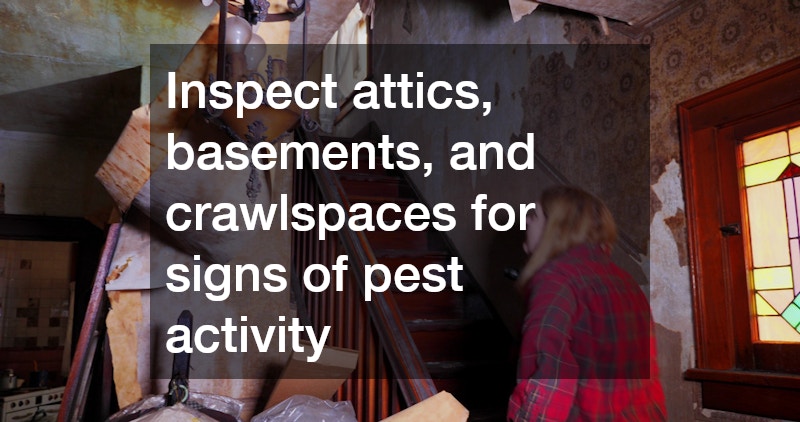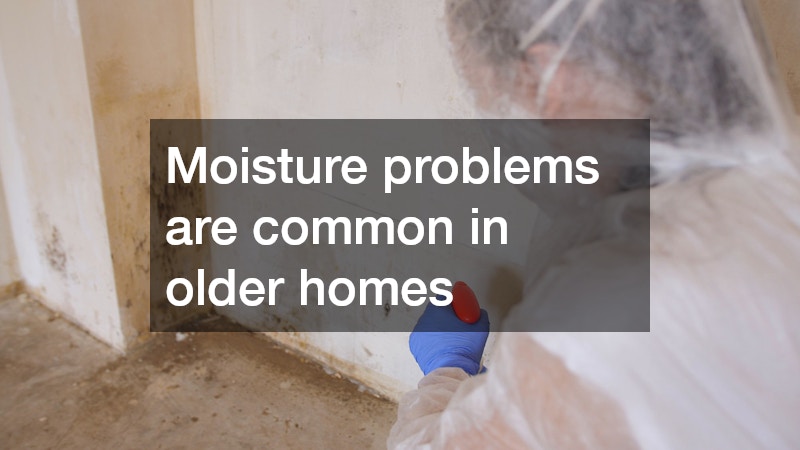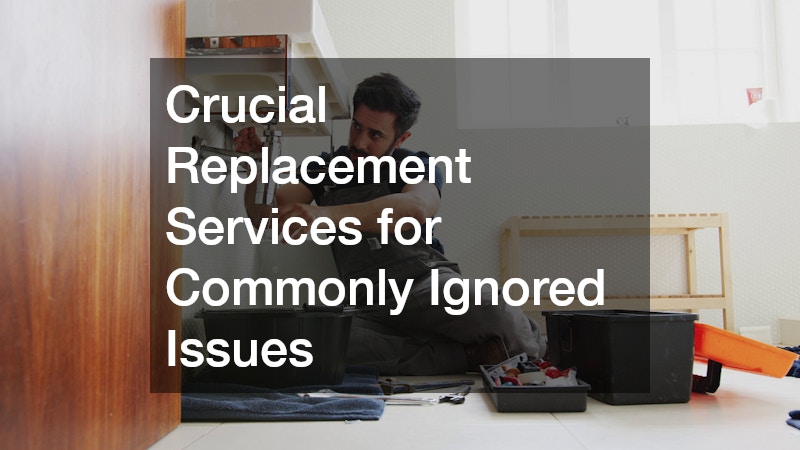Owning an older home can be rewarding, offering charm and character that new builds sometimes lack. However, these homes often come with hidden challenges that can lead to costly repairs if overlooked. From moisture and mold issues to structural concerns and pests, older properties require proactive care. By taking preventive measures and scheduling regular maintenance, homeowners can protect their investment, improve safety, and preserve comfort.
This guide walks through critical areas where hidden problems can emerge, offers actionable tips for prevention, and outlines professional support that can help maintain your home over time.
Scheduling Comprehensive Home Inspections
One of the most important steps in maintaining an older home is to conduct thorough inspections. This ensures early detection of structural, mechanical, and safety issues that may not be visible during a casual walkthrough.
Key steps for effective inspections:
-
Hire a professional: Engaging a general contractor provides a comprehensive assessment of your home. Contractors have the expertise to identify subtle structural weaknesses, roof damage, and potential plumbing or electrical issues.
-
Focus on the roof: Regular roof repair checks can prevent leaks, water damage, and mold growth. Examine shingles, flashing, gutters, and attic spaces for signs of deterioration.
-
Use a checklist: Walk through each area of your home, noting cracks in walls or foundations, water stains, sagging ceilings, and uneven flooring. Documenting these issues allows for prioritized repairs and easier follow-up with contractors.
Benefits of early inspections:
-
Reduces the risk of costly emergency repairs.
-
Helps maintain property value.
-
Ensures the home is safe for family members and visitors.
Identifying and Addressing Mold Issues Early
Moisture problems are particularly common in older homes, often resulting from outdated plumbing, roof leaks, poor drainage, or insufficient ventilation. When left unchecked, moisture can lead to mold growth, which not only damages structural materials like drywall, wood, and insulation but also poses health risks including allergies, respiratory issues, and aggravation of existing conditions. Detecting and addressing mold early is essential to maintaining both the safety and value of your home.
Actionable Steps to Manage Mold
-
Professional removal: If mold is visible or suspected in hidden areas such as behind walls, under flooring, crawlspaces, or basements, it’s crucial to engage a mold remediation company. These professionals use specialized equipment and containment methods to remove mold safely, preventing spores from spreading to other areas. Certified remediation teams also assess the root cause of moisture problems, ensuring that treatments address the underlying issue rather than just the visible mold.
-
Preventive sealing: Work with waterproofing companies to reduce moisture infiltration. This can include applying waterproof coatings on basement walls, installing sump pumps, enhancing exterior drainage, sealing foundation cracks, and reinforcing window wells. Preventive measures like these limit conditions that encourage mold growth and provide long-term protection for structural materials.
-
Routine monitoring: Conduct regular inspections of moisture-prone areas. Look for visual cues such as water stains, peeling paint, warped wood, or discoloration. Musty odors are often the first sign of hidden mold. Using moisture meters behind walls, under flooring, or inside crawlspaces can help detect elevated moisture levels that may not be immediately visible.
Tips for Homeowners
-
Improve ventilation: Ensure bathrooms, kitchens, and laundry rooms have properly functioning exhaust fans. Open windows when weather permits to allow airflow, and consider installing air vents or ventilation systems in basements and attics to reduce trapped humidity.
-
Use dehumidifiers: Basements, crawlspaces, and other enclosed areas can benefit from dehumidifiers to maintain optimal humidity levels (ideally between 30–50%). Consistent humidity control discourages mold growth and helps preserve wooden structures and finishes.
-
Promptly repair leaks: Address leaks in roofs, plumbing systems, windows, and exterior walls immediately. Even small leaks can create conditions for mold growth over time. Regular roof inspections and maintenance reduce the risk of water intrusion from shingles, flashing, or gutters.
-
Regular cleaning and maintenance: Wipe down damp surfaces, use mold-resistant paints, and ensure water does not accumulate around foundation areas. Remove wet carpeting or upholstery promptly after water exposure to prevent microbial growth.
Long-Term Benefits of Early Intervention
-
Protects the structural integrity of the home by preventing deterioration of drywall, wood, and insulation.
-
Reduces health risks for occupants, particularly for children, elderly family members, or individuals with respiratory conditions.
-
Saves money in the long term by preventing extensive damage that requires costly repairs or replacements.
-
Provides peace of mind knowing that both visible and hidden moisture issues are being proactively addressed.
By combining professional remediation, preventive sealing, and routine monitoring, homeowners can effectively manage moisture problems and prevent mold from compromising the safety, comfort, and value of an older home. Early action is the key to stopping minor issues from escalating into major structural or health hazards.
Maintaining Septic and Plumbing Systems
Older homes often rely on aging septic systems and plumbing infrastructure. Neglecting maintenance can lead to blockages, overflows, or costly repairs.
Septic care best practices:
-
Hire a septic tank cleaner to perform regular inspections and pumping as recommended (usually every 3–5 years depending on household size).
-
Avoid flushing non-biodegradable items or excessive grease to reduce clogs.
-
Monitor for slow drains, foul odors, or pooling water around the septic field, which can indicate problems.
Plumbing and roof considerations:
-
Schedule inspections in conjunction with roof repair to identify leaks or water infiltration that could affect plumbing and structural integrity.
-
Replace worn pipes or fixtures promptly to prevent hidden water damage.
-
Insulate exposed pipes to prevent freezing and bursting during winter months.
Benefits of routine maintenance:
-
Reduces risk of sewage backups.
-
Extends the life of your septic system.
-
Helps prevent water damage and related structural problems.
Pest Prevention and Management
Older homes can attract a variety of pests, from termites to rodents and insects, which can damage property and pose health risks.
Effective pest control strategies:
-
Hire professional pest control companies for periodic inspections and treatments to manage common infestations.
-
Engage local pest control companies that understand regional pest patterns and can provide tailored solutions.

Preventive measures:
-
Seal cracks and gaps in walls, windows, and doors to prevent entry.
-
Maintain clean kitchens and remove standing water to reduce attractants.
-
Inspect attics, basements, and crawlspaces for signs of pest activity.
Long-term benefits:
-
Protects wooden structures from termites and carpenter ants.
-
Reduces health risks associated with rodents or insects.
-
Minimizes recurring infestations with scheduled professional treatments.
Outdoor and Landscape Maintenance
The exterior of an older home is often the first line of defense against hidden problems like water damage, foundation erosion, and pest infestations. Proper landscaping and yard maintenance not only improve curb appeal but also protect the structural integrity of the property and enhance long-term value. By proactively managing drainage, plant growth, and outdoor structures, homeowners can prevent many costly repairs.
Key Outdoor Maintenance Actions
-
Lawn aeration: Regular lawn aeration is essential for maintaining healthy soil and promoting proper water absorption. Aerating the soil reduces compaction, allows air, water, and nutrients to reach grassroots, and prevents surface water from pooling near foundations. This helps minimize basement flooding, foundation shifting, and mold growth around the home.
-
Gravel and drainage: Strategically placing local gravel for pathways, driveways, and drainage areas improves water runoff and prevents soil erosion. Gravel also stabilizes heavily trafficked areas and reduces mud accumulation. Consider combining gravel with proper grading to channel water away from the foundation and protect landscaping beds from excessive moisture.
-
Gutter and grading management: Regularly clear gutters, downspouts, and roof valleys to ensure efficient water flow. Maintain proper yard grading to slope away from the house, preventing water from pooling near basements or crawlspaces. Over time, poor drainage can compromise foundations and contribute to hidden water damage inside walls or under flooring.
Additional Tips for Homeowners
-
Trim overgrown trees and shrubs: Keep trees and bushes away from the home’s exterior to reduce debris accumulation on roofs and gutters. Overhanging branches can damage siding and roofing during storms and create ideal habitats for pests.
-
Plant native, low-maintenance vegetation: Native plants typically require less water, resist local pests, and help stabilize soil. Using drought-tolerant or deep-rooted plants around the foundation can reduce runoff and erosion.
-
Inspect fences, retaining walls, and exterior structures: Regularly check for rot, loose posts, cracks, or other signs of deterioration. Retaining walls that fail can redirect water toward the home, while weakened fences can become entry points for wildlife or pests.
-
Mulching and drainage improvements: Apply mulch carefully around plant beds to retain soil moisture without creating excessive dampness near the foundation. For larger properties, consider French drains or swales to redirect runoff away from vulnerable areas.
Benefits of Proactive Outdoor Maintenance
-
Prevents water-related damage to basements, foundations, and crawlspaces.
-
Reduces the risk of pest infestations by eliminating habitats close to the home.
-
Enhances curb appeal and overall property value.
-
Supports long-term stability of outdoor structures and landscaping investments.
By integrating lawn aeration, local gravel for proper drainage, and consistent attention to grading, gutters, and plant growth, homeowners can significantly reduce hidden risks associated with older homes. Proactive outdoor maintenance is not just about aesthetics—it’s a critical step in safeguarding the structural integrity and longevity of the property.
Garage and Entryway Safety
Older garages and entryways can present safety hazards if doors, openers, or thresholds are not properly maintained.
Maintenance and repair tips:
-
Schedule garage door opener repair for any malfunctioning automatic systems. Check sensors, remote controls, and manual overrides to ensure safety and functionality.
-
Consult a general contractor to inspect the structural integrity of garage doors, frames, and adjoining walls. Over time, settling or warping can create hazards or prevent doors from operating smoothly.
-
Maintain proper lighting and clear pathways to reduce tripping risks.
Additional recommendations:
-
Test safety features such as auto-reverse mechanisms on garage doors.
-
Lubricate moving parts to extend lifespan and reduce noise.
-
Keep emergency tools, such as manual door releases and flashlights, accessible.
Proactive Moisture and Weather Protection
Protecting an older home from water intrusion is critical for maintaining structural integrity and preventing mold, rot, and foundation damage.
Strategies for moisture prevention:
-
Hire waterproofing companies to install foundation sealants, French drains, or vapor barriers in basements and crawlspaces.
-
Regular roof repair ensures shingles, flashing, and gutters function properly to prevent leaks and ice dams.
-
Inspect siding, windows, and doors for gaps or cracks that could allow water infiltration.
Seasonal maintenance checklist:
-
Clean gutters and downspouts at least twice a year.
-
Inspect the roof before and after harsh weather events.
-
Monitor indoor humidity levels and use dehumidifiers in damp areas.
Benefits:
-
Reduces the risk of hidden water damage.
-
Prevents mold growth and structural deterioration.
-
Enhances the longevity of roofing and foundation materials.
Regular Monitoring and Documentation
Maintaining an older home requires a structured and organized approach to tracking repairs, services, and inspections. Without a clear system, small issues can be overlooked, leading to costly damage over time. Establishing regular monitoring routines and detailed documentation ensures that all maintenance tasks are completed on schedule and provides a historical record for reference.
Monitoring Tips
-
Track mold remediation services: Keep comprehensive records of all work performed by a mold remediation company, including the specific areas treated, methods used, and recommended follow-up inspections. Note any observations of recurring moisture, musty odors, or visible mold growth, as this can guide future preventative measures.
-
Document pest control visits: Maintain a log of services from pest control companies, including treatments applied, target pests, and any seasonal notes. Highlight problem areas, patterns of recurring infestations, and recommendations provided by technicians. For localized issues, include services from local pest control companies for comparison.
-
Use digital tools and spreadsheets: Organize your home maintenance calendar using spreadsheets, apps, or home management software. Include tasks such as roof repair, plumbing inspections, lawn aeration, local gravel upkeep for driveways, and waterproofing checks. Color-coding tasks by priority or season can help visualize which areas need attention most urgently.
Actionable Steps
-
Review contractor reports: Carefully go through inspection and service reports from contractors such as general contractors, waterproofing specialists, and remediation professionals. Schedule follow-up visits promptly if issues are identified, and confirm that recommended repairs are completed correctly.
-
Photograph before-and-after conditions: Take photos of problem areas prior to repairs and again after work is completed. This visual documentation provides clarity for tracking progress, identifying lingering problems, and supporting insurance claims if damage recurs.
-
Maintain service provider contacts: Keep a centralized list of all contractors and service professionals, including mold remediation companies, pest control companies, local pest control companies, waterproofing companies, and general contractors. Include phone numbers, email addresses, service history, and emergency contacts to ensure easy access when issues arise.
Benefits of Documentation
-
Supports insurance claims: Detailed records and photographic evidence can substantiate claims in case of damage from leaks, pests, or structural failures, reducing disputes with insurers.
-
Enhances preventive planning: Tracking service histories and recurring issues helps anticipate maintenance needs, budget for upcoming repairs, and avoid emergency expenses.
-
Ensures consistency and accountability: Maintaining a clear record across multiple service providers promotes accountability, ensures tasks are not overlooked, and enables informed decision-making about which professionals to retain for ongoing maintenance.
-
Improves long-term home management: A well-documented system helps both current and future homeowners understand the maintenance history, ensuring that the property remains safe, functional, and in good condition over time.
By adopting a systematic approach to monitoring and documentation, homeowners can transform maintenance from a reactive task into a proactive strategy, minimizing hidden risks and extending the life of their older home.





